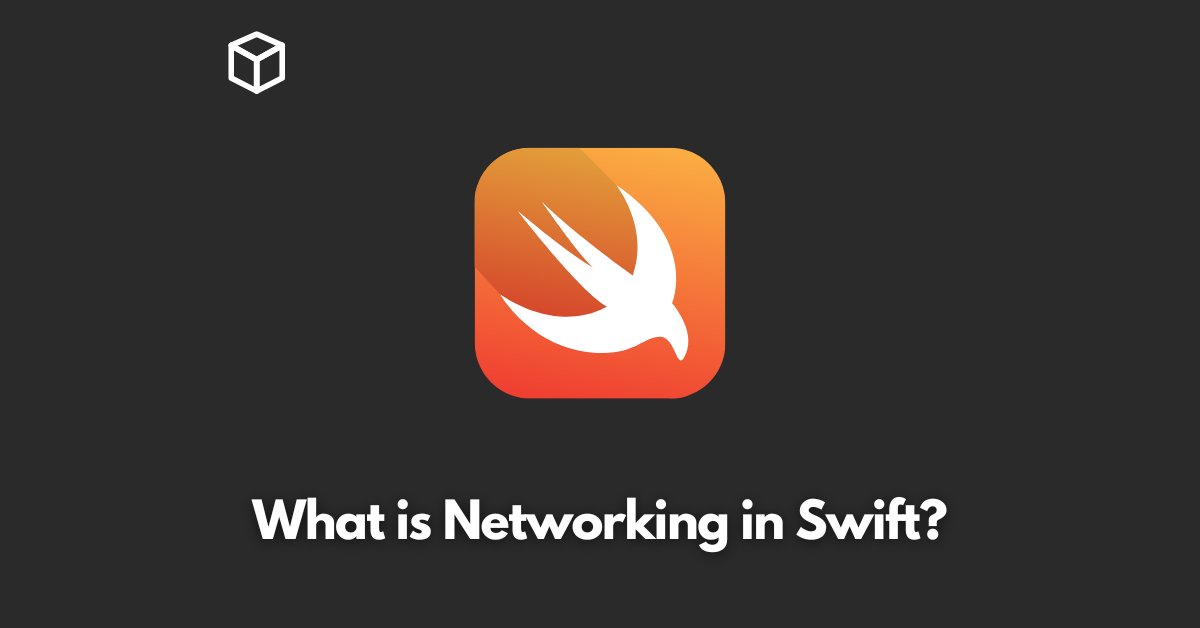Networking is an essential aspect of iOS development, as it allows apps to connect to the internet and retrieve or send data.
In this article, we will focus on networking in Swift, the programming language used to develop iOS apps.
Understanding the basics of networking in Swift
Networking involves using a set of protocols and technologies to transfer data over a network. Some common terms used in networking include HTTP, REST, and API.
HTTP (Hypertext Transfer Protocol) is a widely-used protocol for transferring data over the internet.
REST (Representational State Transfer) is an architectural style for building web services, and API (Application Programming Interface) is a set of rules and protocols for building and interacting with software applications.
In Swift, the main classes and frameworks used for networking are URLSession and URLRequest.
URLSession is used to manage the transfer of data between an app and a server, while URLRequest is used to configure the request sent to the server.
Here is an example of how to make a GET request in Swift using URLSession and URLRequest:
let url = URL(string: "https://www.example.com")!
let task = URLSession.shared.dataTask(with: url) { data, response, error in
if let error = error {
print(error)
} else if let data = data, let response = response as? HTTPURLResponse {
print(response.statusCode)
print(String(data: data, encoding: .utf8)!)
}
}
task.resume()
Making GET and POST requests in Swift
To make a GET request in Swift, we use the dataTask(with:completionHandler:) method of URLSession.
This method takes a URLRequest object as its first parameter and a completion handler as its second parameter.
The completion handler is called when the request is complete and contains the data returned by the server, the response object, and an error object.
Here is an example of how to make a POST request in Swift:
let url = URL(string: "https://www.example.com")!
var request = URLRequest(url: url)
request.httpMethod = "POST"
request.httpBody = "Hello, World!".data(using: .utf8)
let task = URLSession.shared.dataTask(with: request) { data, response, error in
if let error = error {
print(error)
} else if let data = data, let response = response as? HTTPURLResponse {
print(response.statusCode)
print(String(data: data, encoding: .utf8)!)
}
}
task.resume()
It is important to handle errors and parse the data properly when making network requests.
One best practice is to use a guard statement to check for errors, and use a JSON decoder to parse the data returned by the server.
Using third-party libraries for networking in Swift
There are several third-party libraries available for networking in Swift, such as Alamofire and Moya.
These libraries provide a convenient and easy-to-use interface for making network requests, and often include additional features such as caching and request prioritization.
Alamofire, for example, is a popular and widely-used library that provides a simple and elegant API for making network requests.
It is built on top of URLSession and offers a variety of features such as request and response validation, progress tracking, and built-in authentication.
Moya, on the other hand, is a networking library that focuses on abstraction and separation of concerns, making it easy to test and mock network requests.
While using these libraries can simplify the process of networking in Swift, it’s important to consider the pros and cons.
Third-party libraries may add additional complexity and dependencies to your project, and may not always be necessary for simple projects.
Here is an example of how to use Alamofire to make a GET request:
import Alamofire
Alamofire.request("https://www.example.com").responseJSON { response in
print(response.result) // result of response serialization
}
Advanced topics
As you become more experienced with networking in Swift, you may want to explore more advanced topics such as caching, security, and performance optimization.
Caching can be used to reduce the number of network requests and improve the performance of your app.
One popular library for caching in Swift is Kingfisher, which provides an easy-to-use interface for loading and caching images.
Security is also an important aspect of networking, as sensitive data such as passwords and personal information should be properly secured.
One technique for securing network communications is using HTTPS, which encrypts data in transit.
Performance optimization can also be achieved by properly configuring your network requests and using techniques such as request prioritization and parallel requests.
Conclusion
In this blog post, we have covered the basics of networking in Swift and discussed how to make GET and POST requests, handle errors, and parse data.
We also looked at the use of third-party libraries and advanced topics such as caching, security, and performance optimization.
Networking is an essential part of iOS development, and understanding the basics of networking in Swift is important for building robust and efficient apps.
I hope this article has provided a good starting point for learning about networking in Swift.




